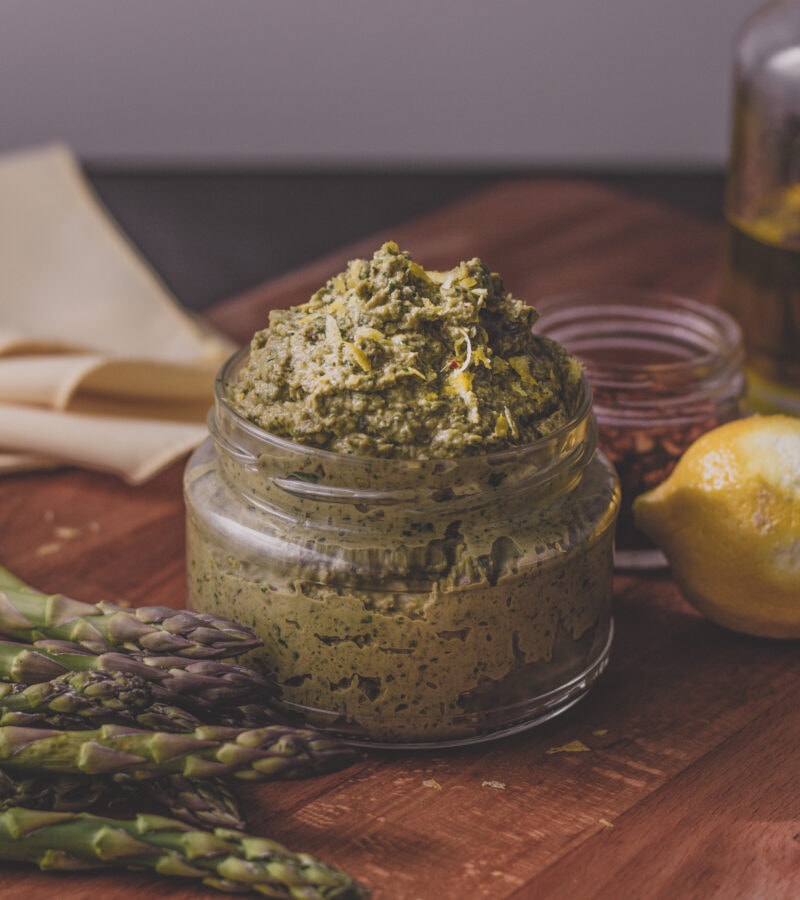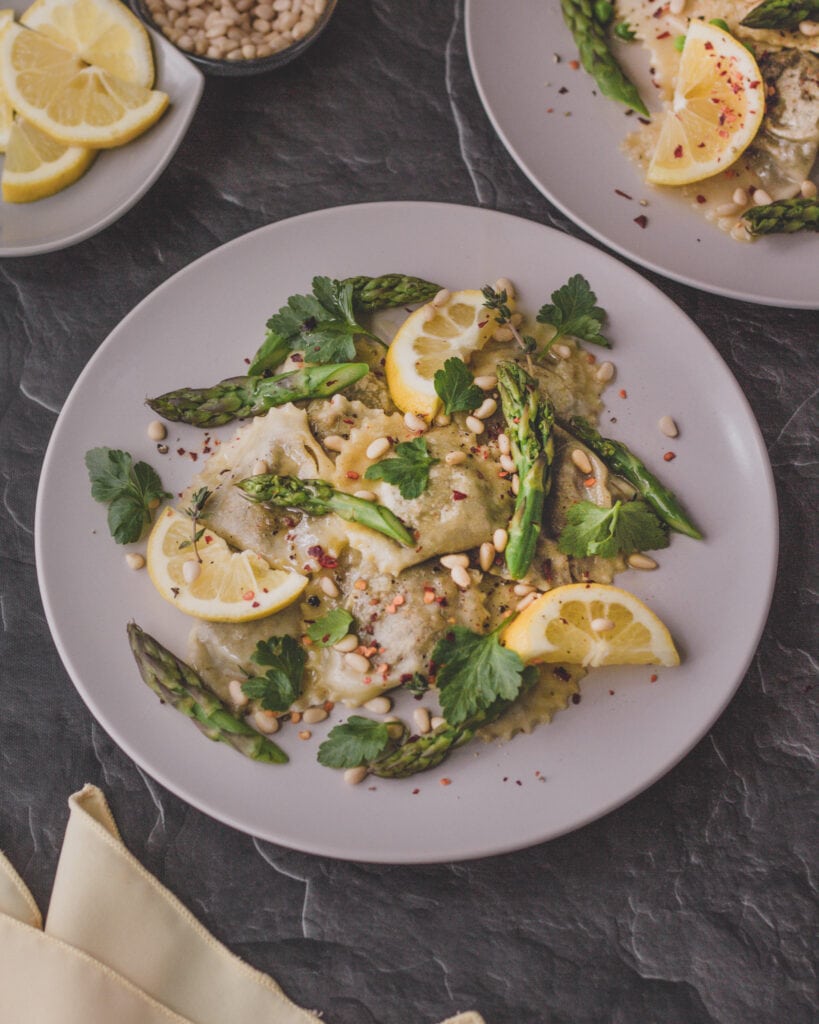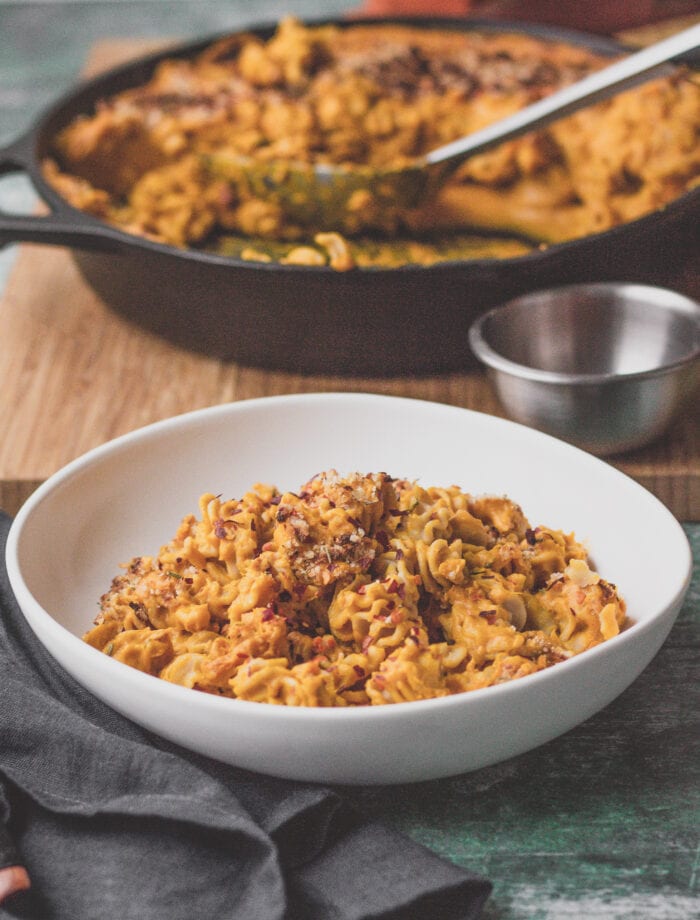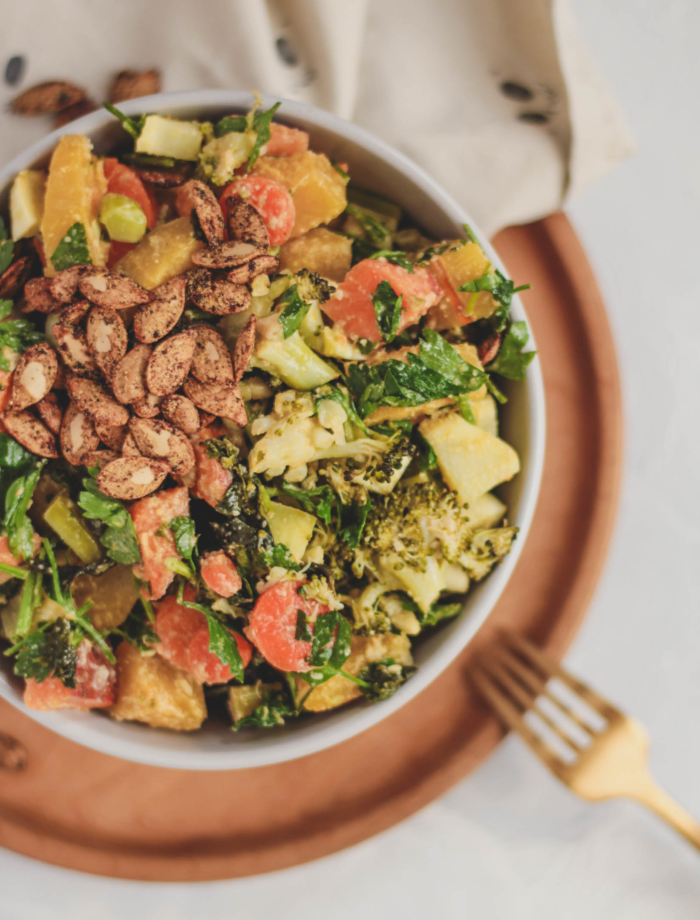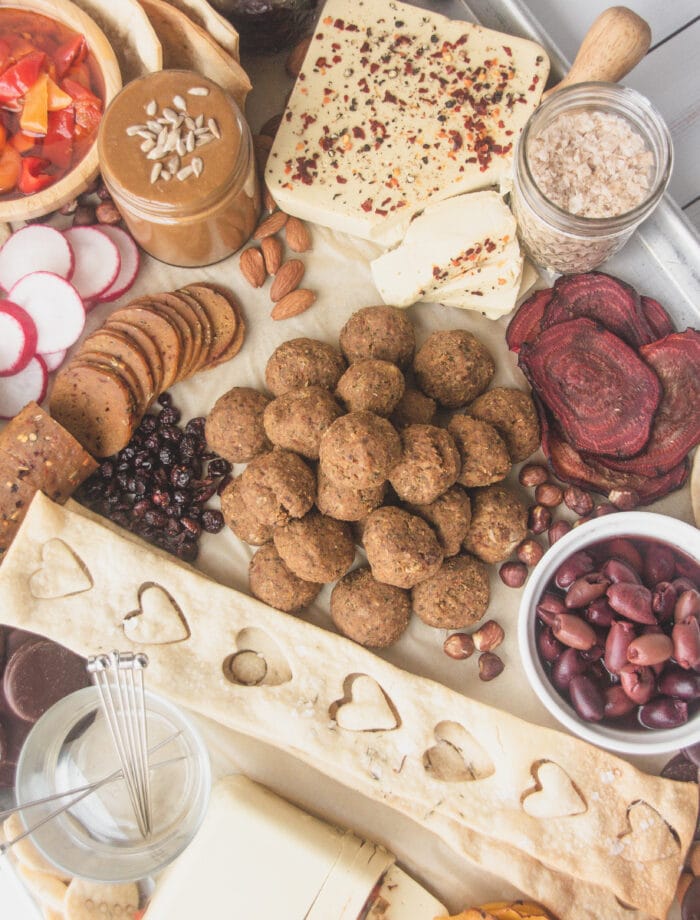I grew up eating a lot of ravioli, most memorably prepared by my grandpa at Christmas (completely solo at his unforgettable insistence) and I like to think that he would appreciate my plant-based spin on the Italian classic. I’ve included two filling options here, but you can choose just one for a shorter prep time or freestyle with whatever you’ve got around. While this recipe is technically possible to roll out with a rolling pin, I highly recommend using a pasta machine! And don’t limit yourself to ravioli–feel free to run your dough through the noodle attachment of the machine–this works perfectly as pesto pasta.
For an extra touch of green and hit of acid, top generously with a batch of herb scraps chimichurri. I also love this dish with a sprinkling plant-based parmesan!
Mickey
